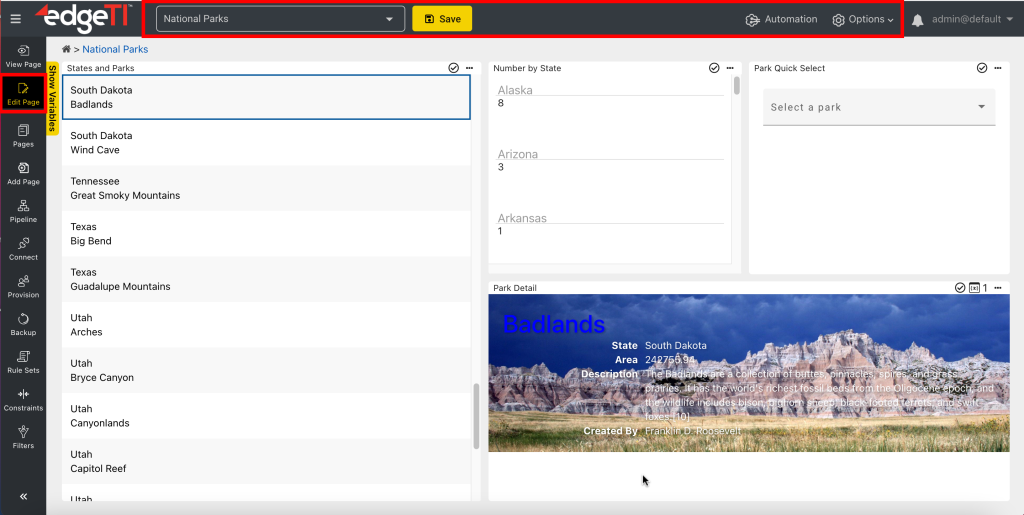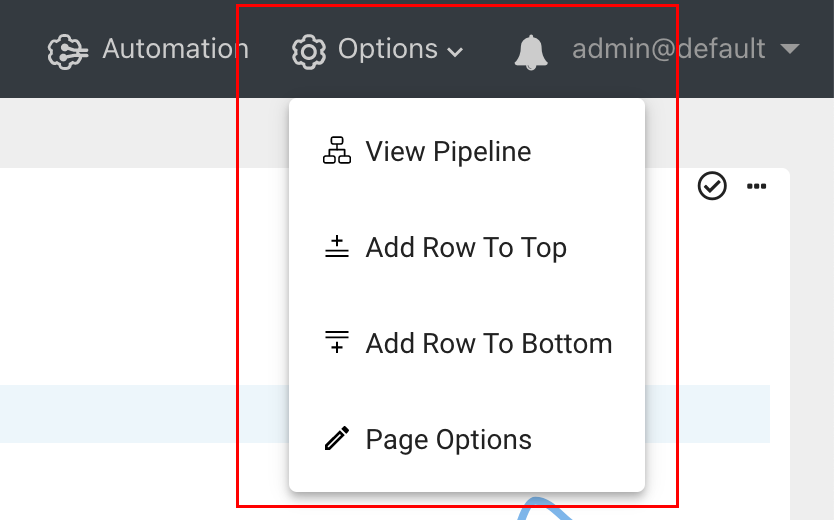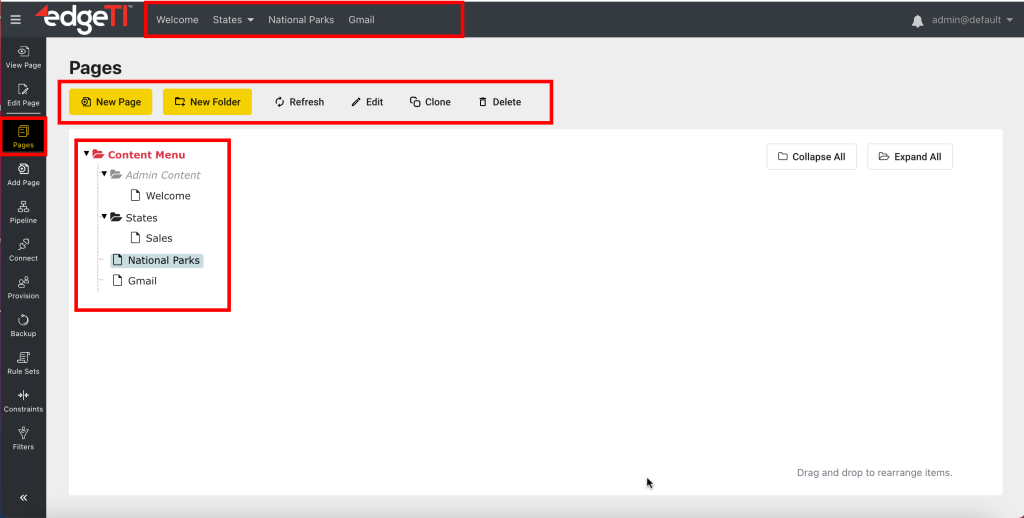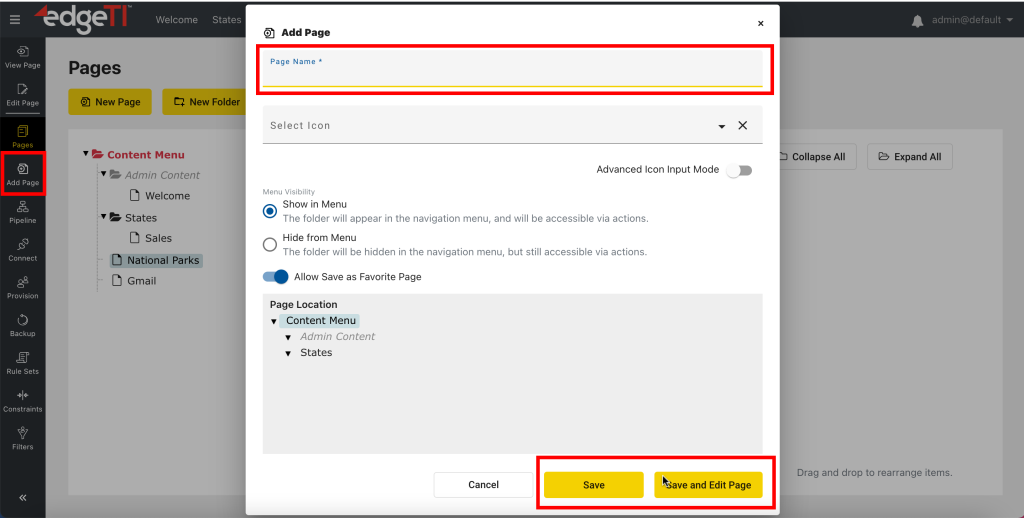Pages represent a named collection of visualizations in the system. Pages fulfill a number of different purposes:
- They determine how visualizations are arranged and displayed to end-users.
- They expose inputs associated with Page Variables. This is how end-users can pass values into the underlying queries, which affect the data shown in the visualizations on a page.
- They form the basis by which content is provisioned to end-users.
- They determine what tabs appear in the banner.
View Page
This is the default page state when browsing a page in the system — the View mode.

Edit Page
To go from the View mode to the Edit mode, click Edit Page.

Once in the Edit mode, you can make changes to the page itself. Moreover, you can choose to edit any page from the dropdown in the upper toolbar.
When in this mode, you will also have access to Automation and page Options. The Automation button enables you to record scripts, whereas the Options button lets you view the pipeline for that specific page, add row to top/bottom, and access additional page options.

The Save button at the top saves all changes to the page. This button will pulse whenever there are unsaved changes. If you attempt to navigate away from a page with unsaved changes, you will be prompted with a warning. There is no auto-save with pages. This means that all modifications to the page, even small resizes, must be explicitly saved using this button.
Pages
Pages are stored in the system using a hierarchical structure. The structure is presented as a tree (Content Menu in the screenshot).

Pages are also displayed in the top banner so you can easily access them. If you want to navigate to a page from the content menu, you can do so by using the following keyboard shortcuts:
MacOS: Alt + click; / Windows & Linux: Ctrl + click;
You can perform the following actions on pages:
- New Page
Used to add a new page to the system. The new page will be created as a child element of what is selected in the content tree. - New Folder
Used to create a new folder in the system. The new folder will be created as a child element of what is selected in the content tree. - Refresh
Used to reload the content. - Edit
Used to edit the properties of the selected page or folder. - Clone
Used to duplicate and reuse the contents of a page. - Delete
Used to delete the selected page or folder from the system. - Collapse All
Used to close all folders in the Content Menu tree. - Expand All
Used to open all folders in the Content Menu tree.
Add Page
You can create a new page either from Pages or by clicking Add Page in the admin menu.

Upon clicking Add Page, a pop-up will be displayed.
In the pop-up, do the following:
- In Page Name, provide a name for the new page.
- (Optional) Select or provide an icon for the page.
- In Menu Visibility, specify whether the page will be directly accessible through the navigation menu.
– Show in Menu: When this option is selected, the page will appear in the navigation menu. It will be directly accessible from the menu as well as via a Switch to Page action.
– Hide from Menu: When this option is selected, the page will be hidden in the navigation menu. The only way to access a hidden page is through a Switch to Page action. - Enable or disable the Allow Save as Favorite Page toggle switch to specify whether users will be able to bookmark the page.
- Save the page.
Here you can either click Save or Save and Edit Page. The only difference is that upon clicking the latter, you will be taken to the created page immediately, and the page will be in the Edit mode.
Related:
